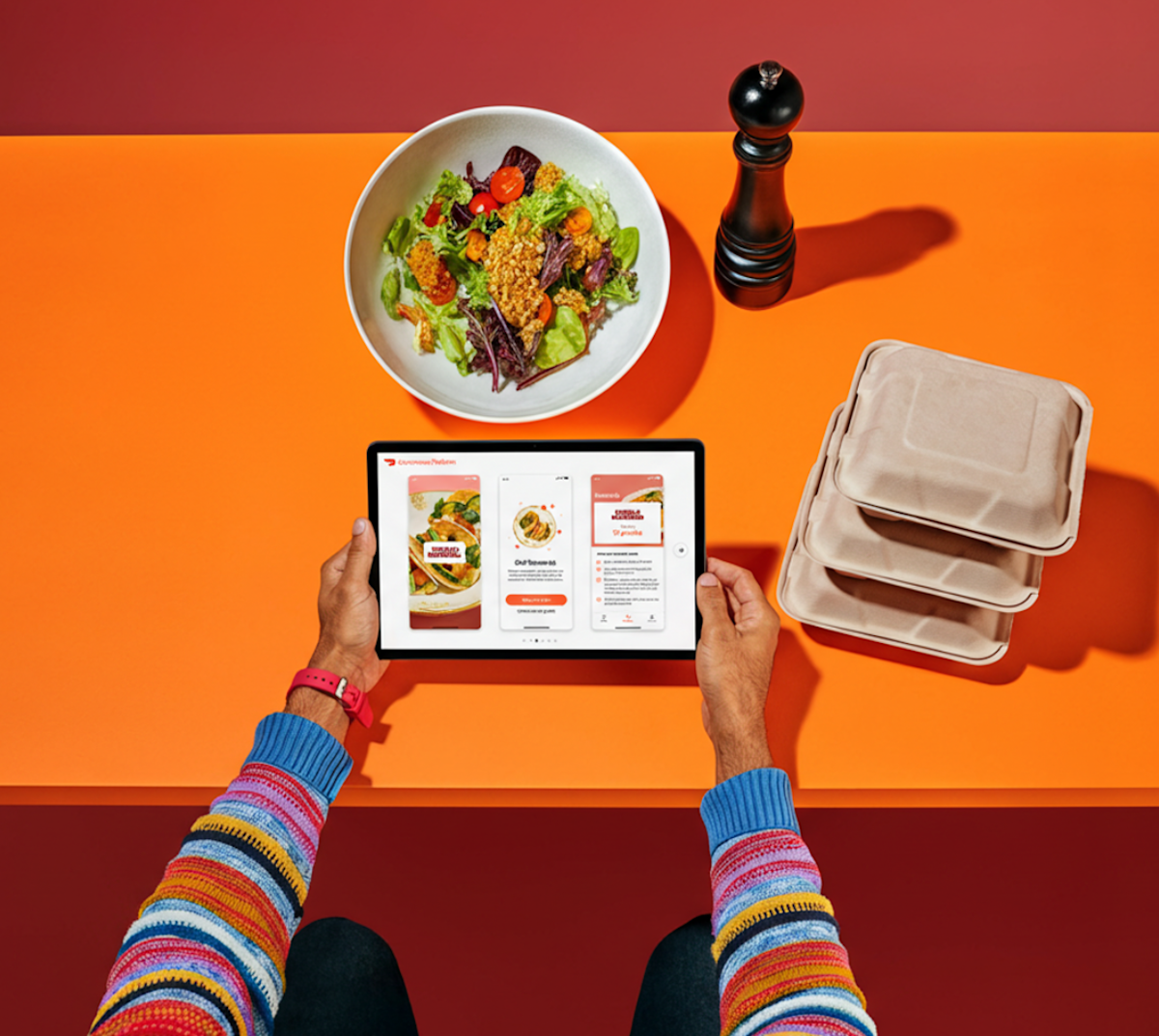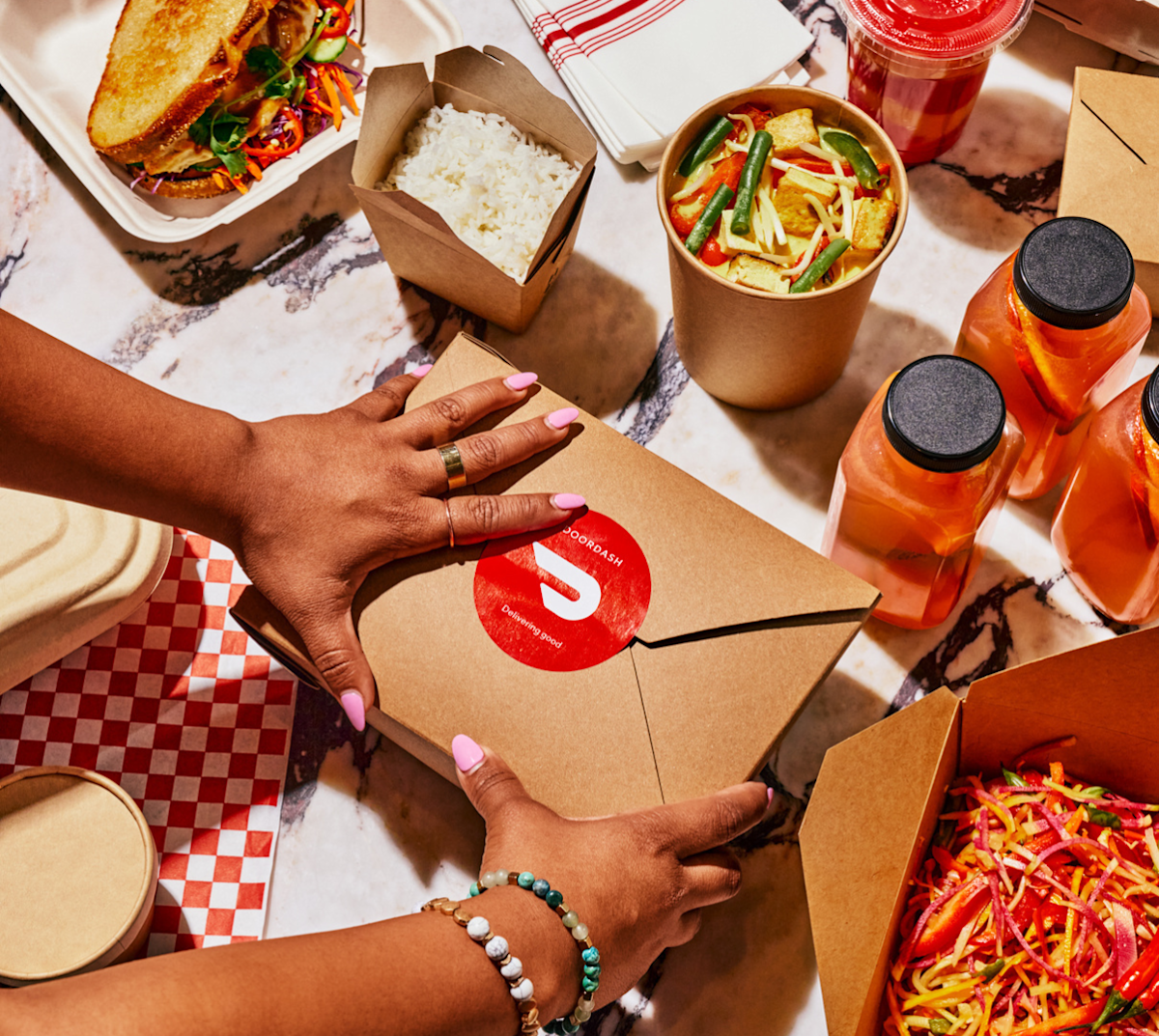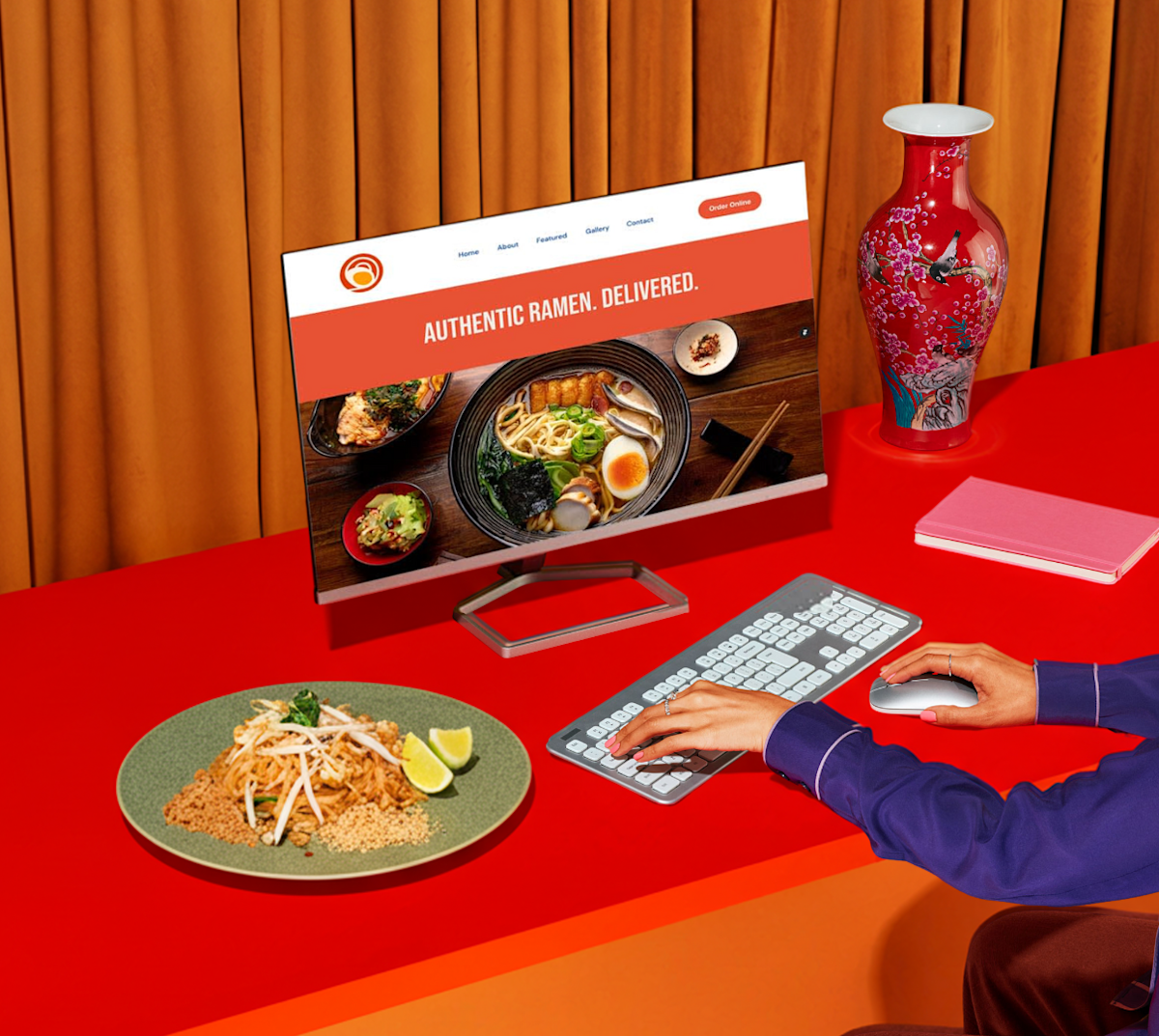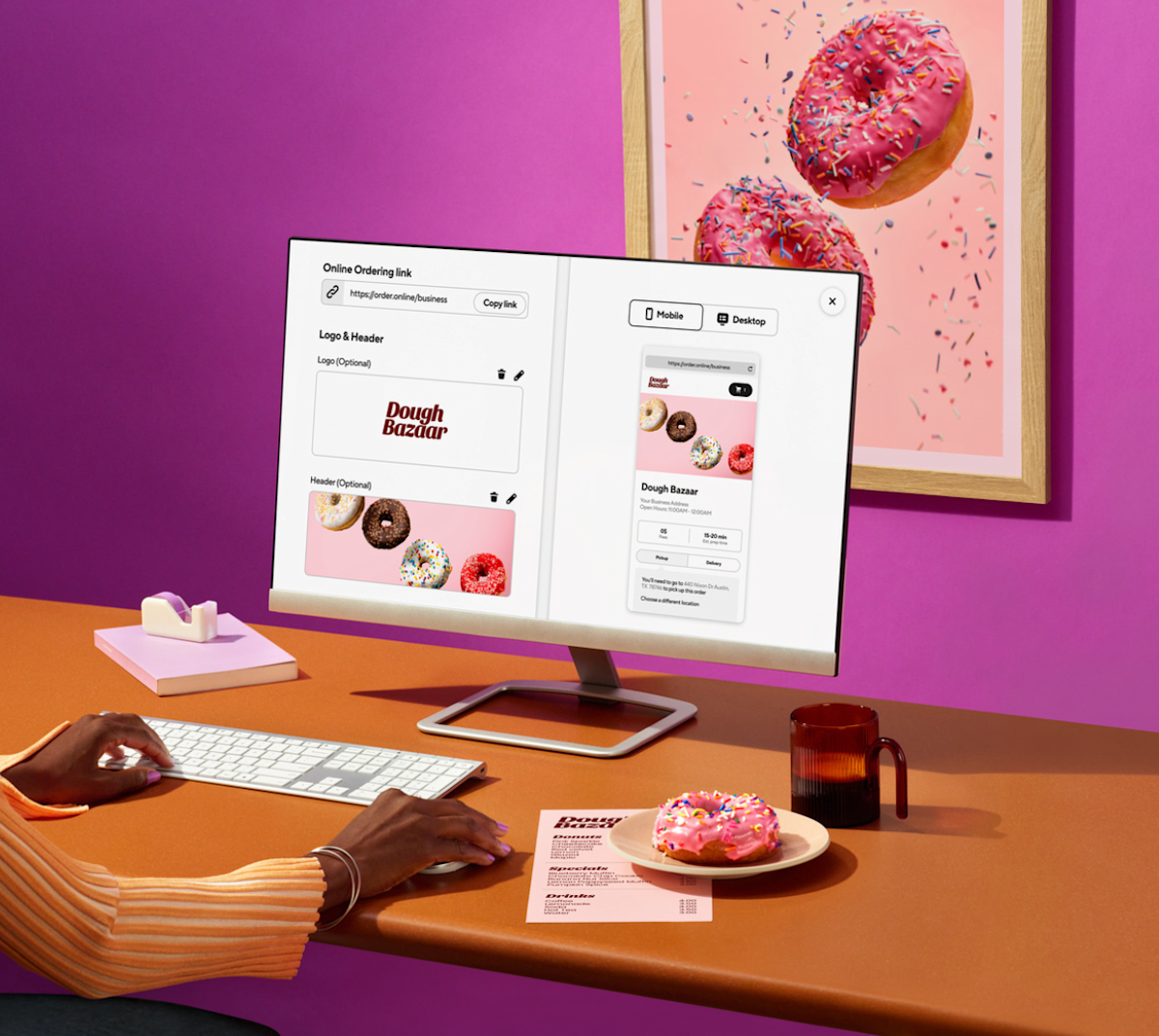Una descripción atractiva de tu restaurante puede hacer que tu negocio destaque entre la multitud. Cuenta tu historia, destaca lo que hace que tu comida sea especial y ayuda a los clientes a decidirse a ordenar de tu negocio.
En esta guía, compartiremos ejemplos de descripciones de restaurantes de diferentes estilos, consejos para escribir la tuya propia y cómo utilizar tu descripción para impulsar las órdenes directas en línea en tu sitio web de marca.
¿Qué es la descripción de un restaurante?
La descripción de un restaurante es un breve resumen que refleja quién eres, qué sirves y por qué a la gente le encanta tu comida. Piensa en ello como tu marca en una o dos frases breves: tu personalidad, tu menú y tus valores, todo en un solo bocado.
Algunas de las mejores descripciones:
Usan un lenguaje sencillo y sabroso
Mencionan los platos estrella o los valores (como el uso de productos locales o recetas familiares)
Adaptan el tono al de su restaurante: cálido, refinado o divertido
Despiertan el apetito y la curiosidad de los clientes
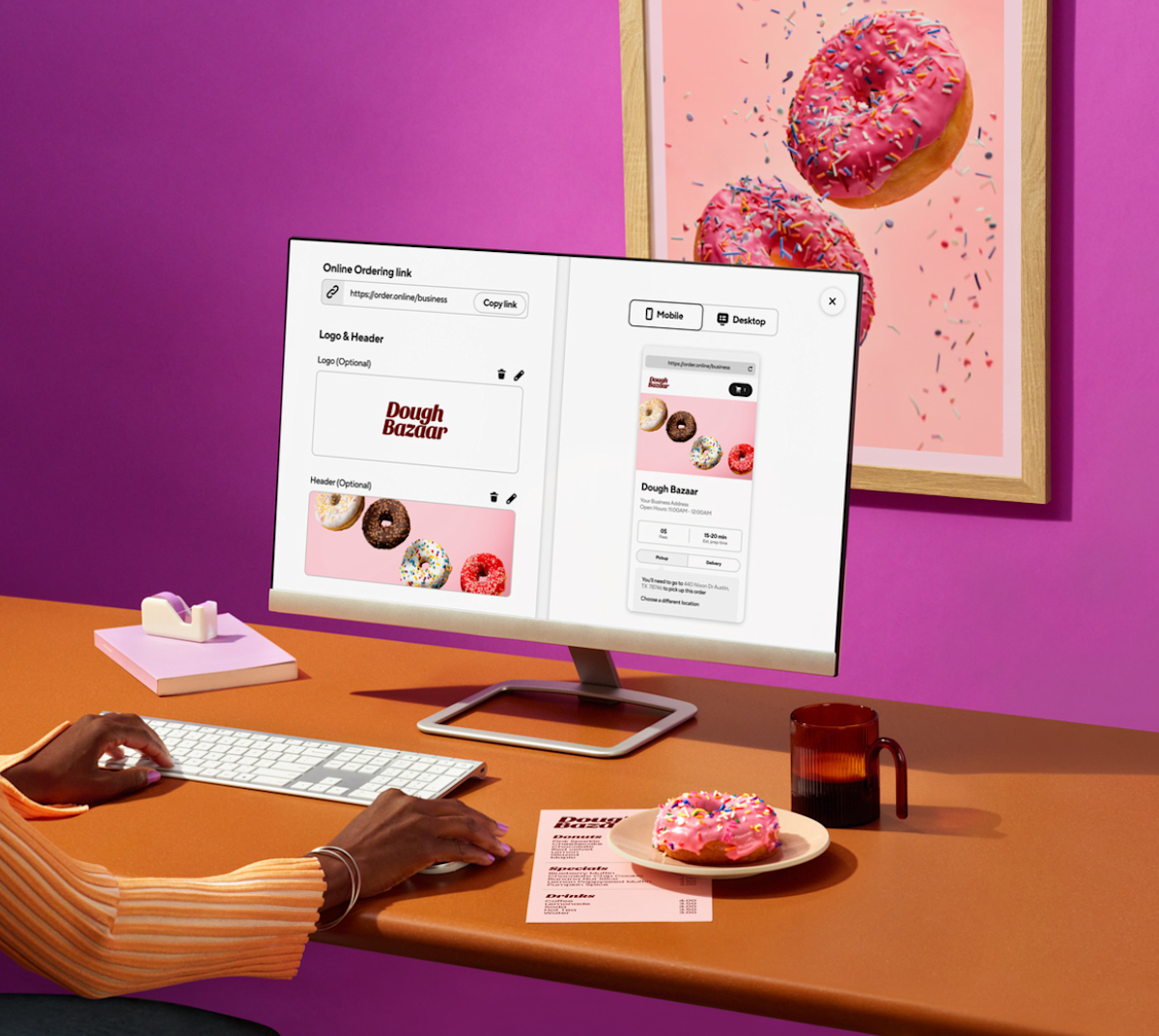
7 ejemplos de descripciones de restaurantes y por qué funcionan
1. Comida reconfortante de negocio familiar
“Sirviendo clásicos caseros desde 1982, donde cada comida se siente como una cena de domingo”.
Por qué funciona: transmite nostalgia y autenticidad. Destaca tanto la longevidad como la sensación de comodidad, lo que genera confianza.
2. Cafetería de la granja a la mesa
“Ingredientes frescos y locales elaborados en platos de temporada inspirados en los cultivos de la región”.
Por qué funciona: la descripción es breve y sensorial, y transmite al instante frescura y sostenibilidad.
3. Barra de burritos de servicio rápido
“Rápido, sabroso y personalizable. Tu burrito, a tu manera”.
Por qué funciona: el lenguaje activo y optimista refleja la experiencia de servicio rápido. “Tu burrito, a tu manera” lo hace personal.
4. Pizzería del barrio
“Masa amasada a mano, salsa cocinada a fuego lento y décadas de amor local”.
Por qué funciona: la redacción tiene un aire artesanal y centrado en la comunidad, perfecto para un restaurante local independiente.
5. Bistró vegano moderno
“Platos a base de plantas llenos de sabores atrevidos, donde la comodidad se encuentra con la creatividad”.
Por qué funciona: tono positivo y moderno. Destaca la comida vegana y deja claro que el restaurante tiene un menú amplio y creativo.
6. Experiencia gastronómica de alta cocina
“Clásicos reinventados elaborados con ingredientes de temporada y servidos con verdadera calidez”.
Por qué funciona: sofisticado pero no pretencioso. Combina profesionalismo con hospitalidad.
7. Food truck de comida callejera internacional
“Especias audaces y energía nocturna, comida callejera del mundo, fresca y al instante”.
Por qué funciona: el lenguaje enérgico se adapta al espíritu de la marca y su público, y establece expectativas claras.
Cómo escribir una descripción de restaurante que atraiga clientes
¿Listo para escribir la tuya? Emplea estos consejos prácticos:
1. Comienza destacando tu plato o sabores estrella
Empieza con aquello por lo que eres conocido: “pizza al horno de leña”, “pasta casera” o “costillas galardonadas”, para que los clientes sepan de inmediato qué pueden esperar de tu menú.
2. Que sea breve
Las descripciones breves son más fáciles de leer y recordar. Apunta a 1 o 2 oraciones como máximo.
3. Usa la voz auténtica de tu restaurante
Escribe como hablarías con un cliente. ¿Eres informal y acogedor? ¿Divertido y rápido? Adapta tu tono a tu experiencia gastronómica.
4. Agrega tus valores
¿Es un negocio familiar, con productos locales o enfocado en la comunidad? Mencionar lo que más importa ayuda a los clientes a conectar con tu historia.
5. Piensa en SEO
Si estás en una ciudad o te especializas en un plato concreto, añade una palabra clave de SEO local de forma natural, como “los mejores tacos de Austin” o “el mejor lugar de brunch en Seattle”.
Dónde usar la descripción de tu restaurante
La descripción de tu restaurante debe aparecer en cualquier lugar donde los clientes puedan descubrir tu negocio en línea. Un mensaje coherente ayuda a las personas a reconocer tu marca, mejora tu SEO local y genera confianza entre los nuevos clientes.
A continuación te indicamos dónde y cómo utilizarla de manera eficaz:
Google Business Profile
Tu Perfil de Negocio en Google es a menudo el primer lugar donde los comensales ven tu restaurante, por lo que tu descripción debe indicar claramente quién eres y qué sirves.
Sé breve, descriptivo y utiliza muchas palabras clave.
Destaca el tipo de cocina, el ambiente y las especialidades (p. ej., “restaurante italiano familiar en Chicago que sirve pizza al horno de leña y pasta casera”).
Evita repetir palabra por palabra los artículos del menú; céntrate en tu historia y en lo que hace que tu restaurante sea único.
Perfiles en redes sociales
Tus redes sociales son el lugar ideal para compartir la personalidad de tu marca. Y con canales como Instagram, Facebook y TikTok como lugares de referencia para descubrir restaurantes, las redes sociales son el lugar perfecto para publicar la descripción de tu restaurante.
Si has optado por una descripción más larga del restaurante, crea una versión más corta para tus perfiles en redes sociales (menos de 150 caracteres en Instagram).
Agrega emojis si se ajustan al tono de tu negocio (p. ej., “🌮 Lugar de tacos local • Fresco, rápido y sabroso”).
Emplea las mejores prácticas de SEO de Instagram para que sea más fácil para los clientes encontrarte al buscar en Instagram
Sitio web del restaurante
El sitio web de tu restaurante es tu escaparate digital, donde los clientes descubren quién eres, navegan por tu menú y realizan órdenes directas. La descripción de tu restaurante debe estar en primer plano.
Con los sitios web de marca disponibles con la Plataforma de comercio de DoorDash, tu descripción puede hacer más que contar tu historia: puede ayudarte a aumentar las ventas:
Las órdenes en línea sin comisiones* te permiten convertir a los visitantes del sitio en clientes reales.
Un botón inteligente de “Ordenar ahora” facilita que los clientes encuentren tu menú interactivo tan pronto como lleguen a tu sitio.
Todos los sitios web de marca creados a través de la Plataforma de comercio están optimizados para búsquedas, son compatibles con dispositivos móviles y están listos para mostrar tu menú, fotos e historia en una experiencia fluida.
5. Anuncios por correo electrónico y en línea
En cualquier lugar donde aparezca tu restaurante en línea, desde Yelp y TripAdvisor hasta el marketing por correo electrónico de tu restaurante, debe reflejar el mismo tono e historia.
Las descripciones uniformes de los restaurantes en todos estos puntos de contacto crean una identidad de marca más fuerte, y cuando se combinan con un sitio web de marca impulsado por la Plataforma de comercio de DoorDash, pueden convertir directamente a los visitantes en clientes leales y habituales.
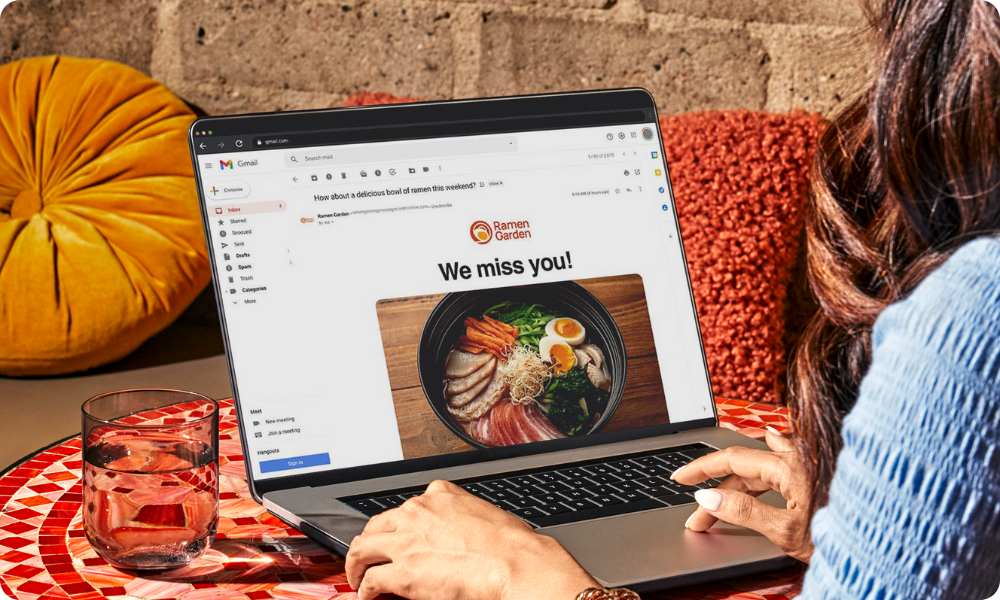
Lleva la historia de tu restaurante a Internet
Tu descripción es tu primera impresión. Con la Plataforma de comercio de DoorDash, puedes convertirla en parte de una experiencia en línea completa, una que ayuda a los clientes a encontrar tu negocio, enamorarse de tu comida y ordenar directamente.
Get a Commerce Platform demo*Se aplica una tarifa de procesamiento de pagos del 2.9% + $0.30
